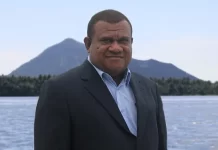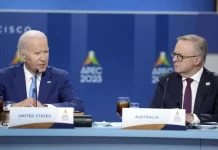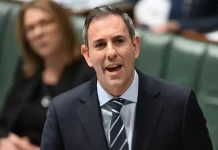The existing rules and regulations for fisheries in the Pacific are sufficient to meet the goals of the proposed expansion of the Pacific Remote Islands National Marine Monument, according to marine scientists at the Western Pacific Regional Fishery Management Council(WPRPFC).
The council’s Scientific and Statistical Committee reached such a conclusion after reviewing the Pacific Remote Islands Fishery Ecosystem Plan.
The review was conducted to determine if additional regulations were necessary prior to the establishment of a new sanctuary to increase the protected areas around the Pacific Remote Islands.
“(Committee) members agreed that the regulations in place are sufficient and essentially best practices for fisheries in the Pacific,” states a press release from the fishery council.
The council has until 20 December to provide an official response to the Office of National Marine Sanctuaries regarding the need for draft fishing regulations.
Currently, the Pacific Remote Islands monument area consists of approximately 495,189 square miles in the central Pacific Ocean, encompassing seven islands and atolls: Baker, Howland, and Jarvis Island, Johnston, Wake, Palmyra Atoll and Kingman Reef.
The Biden administration plans to close off another area southwest of Hawaii.
During a meeting this week, the Office of National Marine Sanctuaries reported that the proposed marine monument expansion garnered approximately 57,000 comments from supporters and opponents of the plan.
Brady Phillips, marine sanctuary office, said the council’s input would be helpful to draft alternatives to balance the president’s directive to “provide lasting and comprehensive protection” with existing fishing rules and regulations.
Phillips noted that the agency is considering all information received to develop a full range of alternatives for the proposed sanctuary.
“I think we need to be honest about what additional regulations would protect,” said Ray Hilborn, professor at the University of Washington. “Nearshore coral reefs are already covered; the real threats aren’t coming from fishing, they are coming from climate change.”
Erik Franklin, acting chair of the scientific committee, noted that in the U.S mainland, sanctuaries are viewed as multi-use zones including fishing.
It’s different in the Pacific island region, where fishing is the “lifeblood of our heritage,” Franklin said.
“It feels like government overreach to try to meet the global need to close ocean areas to achieve certain targets without thinking of the potential impacts,” Franklin said. “If we really want to meet ONMS’ goal of conserving cultural heritage, we need to include fishing as a critical component.”
Historically, the combined Hawaii- and American Samoa-based longline commercial catches ranged from 149 to 1,404 metric tons per year in the U.S. EEZ of the PRI, and the U.S. purse seine fleet catches ranged from 642 to 37,480mt per year.
From 2015 to the present, following the PRI Marine National Monument establishment and subsequent expansion, the two longline fleets caught a combined total of 125mt, and the purse seine fleet.
The Hawaii deep-set longline fleet delivers to the Port of Honolulu, but 85 percent of the purse seine fleet’s catch in the PRI is landed in Pago Pago, American Samoa. Up to 80 percent of the fish supplied to the StarKist cannery is from U.S. fleets.
Tuna landings for the two commercial fleets for the past decade have had a negligible impact on the bigeye, yellowfin and skipjack stocks in the Western and Central Pacific Ocean at 3.6 percent, 0.8 percent and 0.2 percent of maximum sustainable yield, respectively.
The fisheries have no impact on benthic habitats or seamounts due to the deep waters, and low interactions with protected species like sea turtles and oceanic whitetip sharks.
After the scoping phase concludes, ONMS will develop proposed sanctuary designation documents, including a draft Environmental Impact Statement and management plan, around the end of 2023 and into 2024.
SOURCE: WPRPFC/PACIFIC ISLAND TIMES/PACNEWS















